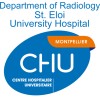
Brazilian Intervention to Increase Evidence Usage in Practice - Acute Coronary Syndromes
Acute Coronary SyndromePhase 1: An observational study (registry) will be conducted which will objectively document the ACS clinical practice in Brazilian public hospitals, and identify the important barriers for the evidence usage incorporation in the clinical practice. Phase 2: A Cluster randomized clinical trial in which public hospital will be randomized to receive or not a multifaceted strategy in order to increase evidence based therapy in clinical practice.

Cardiac Rehabilitation for Heart Event Recovery (HER)
Myocardial IschemiaAcute Coronary Syndrome2 moreThe purpose of this study is to compare women's cardiac rehabilitation program adherence across three program models.

Effectiveness And Safety Of Dalteparin In Patients With Acute Coronary Syndromes Without ST Elevations...
Acute Coronary SyndromeTo collect data on safety and effectiveness of dalteparin in the management of non-ST segment elevated acute coronary syndromes in nursing home patients who will be treated conservatively (without percutaneous corornary intervention [PCI] or coronary artery bypass graft [CABG] within 48 hours).

PRedictOrs, PHEnotypes and Timing of Obstructive Sleep Apnea in Acute Coronary Syndrome
ST Elevated Myocardial InfarctionSleep-Disordered Breathing2 moreObstructive Sleep Apnea (OSA) is a well-known disorder of upper airways collapse during sleep time leading to oxygen desaturation and sleep fragmentation. Despite being increasingly recognized as cardiovascular risk, the effect of OSA on clinical outcomes after Acute Coronary Syndrome (ACS) is not fully defined. Also, OSA syndrome is highly prevalent in ACS and may be related to the deterioration of cardiac function resulting in worsening of the severity of sleep apnea or the intermittent hypoxia could be cardio-protective via the ischemic preconditioning event. Serial sleep studies have shown the progressive reduction of the Apnea / Hypopnea Index (AHI) from the admission in Coronary Care Unit (CCU) to 6 weeks, 12 weeks and 6-month follow up, making necessary to re-assess the severity of OSA after discharge. Therefore, further research in this field is necessary to screen and predict those ACS patients who may experience a change in their AHI index over time.

In Hospital Course of Acute Coronary Artery Syndromes
Acute Coronary SyndromeIntensive Care Unit SyndromeWhile international guidelines have indicated that use of a routine invasive strategy was favored for high-risk patients with NSTE-ACS and for all STE- ACS, the lower risk patients successfully reperfused and carrefully selected may perhaps not benefit of this systematic strategy. Evaluation of complications occurring in a contemporary population of ACS may help to evaluate the need of ICU strategy. Coupled with favorable outcomes in many patients, these data may be an opportunity for testing of strategies to refine triage to less costly hospital care units. The investigators thus want to compare, through an observational and prospective study, the event rate of two groups of patients with ACS admitted to ICU . Patients are classified as "high risk" and "low risk" according to specific medical criteria validated in the literature. The study will include all consecutive patients admitted for NSTACS and STACS admitted to the intensive care department of the Montpellier university hospital with the diagnosis of ACS confirmed by coronary angiography. Our primary goal is to compare the percentage of patients with at least one serious clinical event between the high and low risk groups. A serious event is defined by the occurrence within 7+/-5 days of one of the following criteria: death all causes, serious neurological or hemorrhagic complications, hemodynamic instability and severe heart failure, rhythm or sustained or poorly tolerated conduction disorders requiring therapeutic intervention, painful recurrence requiring new coronary angiography, secondary transfer to intensive care for any reason. Our hypothesis is that low-risk patients will have very few events and no fatal events and that they could not require intensive care unit admission .

LPS and Platelet Activation in Myocardial Infarction
Myocardial InfarctionAcute Coronary SyndromePlatelets play a key role in the athero-thrombotic process. However, the in vivo mechanism accounting for thrombus growth at site of coronary atherosclerotic lesion has not been fully elucidated. While platelet adhesion and aggregation on the thrombogenic core of atherosclerotic plaque is an established mechanism for thrombus growth, the role of systemic factors, which may contribute to thrombus via amplification and propagation of platelet aggregation, is still to be clarified. There is a growing body of evidence that lipopolysaccharides (LPS), are implicated in athero-thrombosis. Circulating levels of endotoxins have been associated with human atherosclerosis progression, particularly in smokers or in patients with infections. Furthermore, endotoxins seem to be implicated in the thrombotic process through several mechanisms including up-regulation of macrophage tissue factor expression and amplification of platelet response upon interaction with Toll-like receptor 4. The relationship between endotoxins and platelets may be relevant in the context of acute coronary syndromes as endotoxins could locally amplify platelet-derived thrombus growth but this issue is still unexplored. Previous studies demonstrated that low-grade endotoxemia is detectable in human circulation, likely as consequence of enhanced gut permeability, and may be responsible for leucocyte-platelet aggregate and eventually thrombosis. The investigators hypothesize that low-grade endotoxemia may be observed in patients with coronary heart disease and may favor, at site of coronary unstable plaque, thrombus growth. To explore this issue, Escherichia Coli (EC)-LPS concentration and biomarkers of platelet activation will be measured in coronary thrombus and intra-coronary blood of patients with STEMI and stable angina (SA), respectively, and in peripheral circulation of both patients and controls. EC DNA will be searched in serum of all patients by polymerase chain reaction (PCR). Furthermore, to substantiate that LPS could be biologically active, immune-histochemical analysis of thrombi and in vitro studies will be performed to assess the interplay between LPS and platelet activation.

Impact of OSA on Outcomes in Acute Coronary Syndrome
OSAACS - Acute Coronary Syndrome1 moreElucidating the effects of obstructive sleep apnea (OSA) on cardiovascular outcomes in acute coronary syndrome (ACS) is crucial in risk assessments and therapeutic recommendations for affected individuals. Although large epidemiological studies have reported an association between OSA and both coronary heart disease (CHD) and heart failure (HF), its effect on outcomes in ACS is still unclear. In contrast to previous theories attributing causation to OSA, recent studies have hypothesized a cardio protective role of OSA. Repetitive hypoxemic episodes noted in OSA may lead to myocardial ischemic preconditioning, possibly by increasing coronary collateral vessel recruitment, conferring protection from acute coronary events. We propose a prospective, observational, single center study in patients presenting with ACS, including ST segment elevation (STEMI), non-ST segment elevation (NSTEMI) and unstable angina who undergo coronary revascularization to determine the impact of OSA on clinical outcomes after ACS. Adult patients above age 18 years who present with myocardial infarction are eligible. Recruited patients will undergo an overnight sleep study using a level III portable diagnostic device before hospital discharge. The sleep tracings will be analyzed and audited by a certified sleep physician. The patients will be divided into 2 groups based on apnea-hypopnea index (AHI): OSA (AHI ≥ 15) and non-OSA (AHI < 15) groups. The primary end points of this study were in-hospital, 30 day and 6 month major adverse cardiovascular events (MACE), defined as a composite endpoint of cardiovascular death, non-fatal MI, stroke and the need for unplanned repeat revascularization. Secondary endpoints include individual MACE outcomes of cardiovascular death, non-fatal MI, stroke, need for unplanned repeat revascularization, heart failure requiring hospitalization, and all-cause mortality.

PRediction of Acute Coronary Syndrome in Acute Ischemic StrokE
StrokeIschemic1 moreThe primary goal of the PRAISE study is to develop a diagnostic algorithm that allows the prediction of acute coronary syndrome in stroke patients with elevated levels of cardiac troponin.

Systemic, Pancoronary and Local Coronary Vulnerability
Coronary StenosisAcute Coronary Syndrome5 more• The aim of the VIP study is to investigate the impact of vulnerability markers (inflammatory serum biomarkers for systemic vulnerability, coronary shear stress and vulnerability mapping for pancoronary vulnerability, and imaging-based plaque features for systemic vulnerability) on the rate of major adverse cardiovascular events caused by progression of the non-culprit lesion in patients with acute ST or non-ST segment elevation myocardial infarction who undergo revascularization of the culprit lesion during the acute event. Furthermore, the study will evaluate the rate of progression of non-culprit lesions towards a higher degree of vulnerability, based on coronary computed tomography angiographic assessment at 1 year after enrollment.

Primary Prevention With Statin and Incidence of Recurrent MI and Cardiogenic Shock in Post-ACS Patients...
Acute Coronary SyndromeRecurrent Myocardial Infarction1 moreThis study aims to evaluate the effect of statin for primary prevention, towards lowering the incidence of recurrent myocardial infarction, cardiogenic shock and mortality in ACS patients.
